Nature is beautiful, and even more so are the creatures that live in it. Have you ever seen a mockingbird perched on a nearby tree? They are captivating creatures and some of their behaviors would surprise you; did you know that mockingbirds are very territorial?
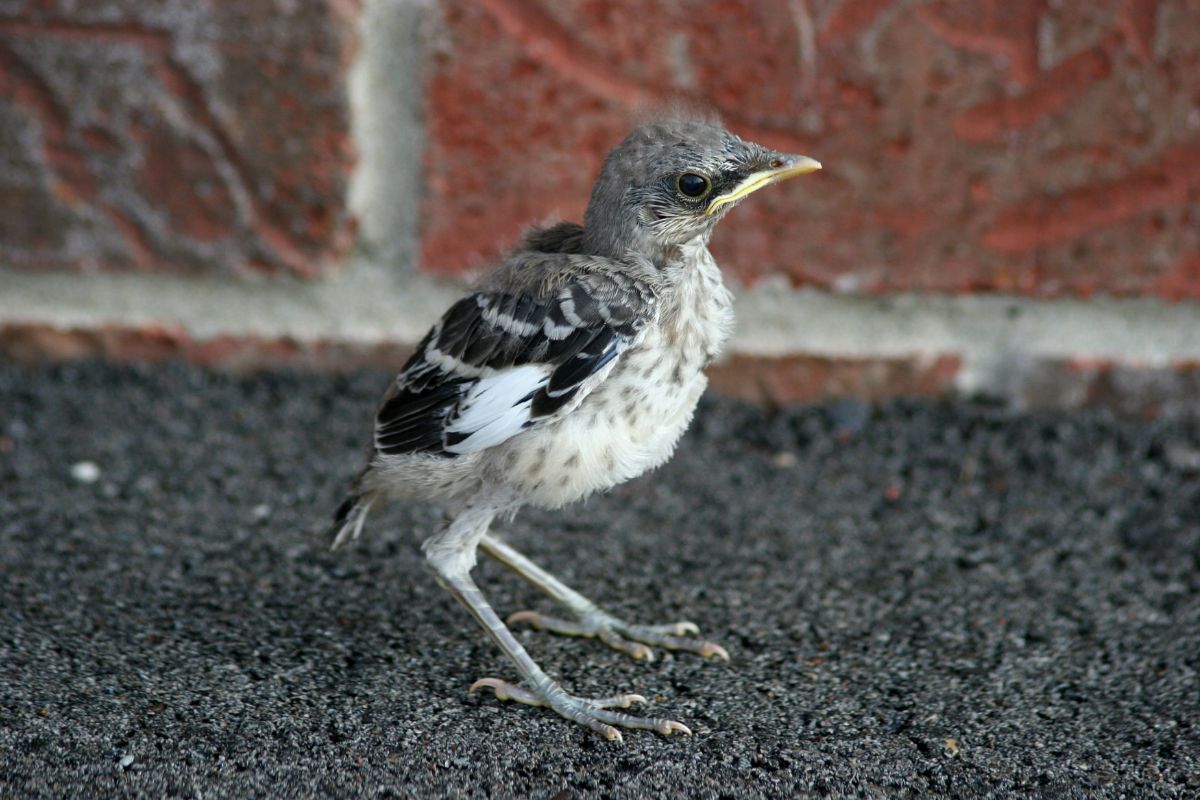
Mockingbirds mate for life, which means that parents generally take good care of their young until they are ready to live on their own. But how long do mockingbirds stay with their parents until they’re able to leave the nest? What happens if they leave the nest too early?
Here, we’ll talk about everything you need to know about baby mockingbirds and what to do if you should ever run into a situation where you need to take care of one.
Contents
Where and When Can You Find Baby Mockingbirds?
Baby mockingbirds, along with their parents, are native to North and South America. If you live in North America, the only species you’ll come into contact with is the Northern Mockingbird.
If you have mockingbirds on your property, you may be able to recognize them after a while. Mockingbirds can be territorial and aren’t afraid to fight for their space and privacy, so any mockingbirds that decide to nest near your home will remain there until their young are fully grown.
After courting and mating, which mockingbirds tend to do for life, they will start to build a nest together. By paying attention to their flying habits, you can start seeing possible places where their nest is. Be careful, however; mockingbirds’ territorial nature can also come into play with humans! Get too close to the nest and they may dive at you to scare you off.
You can expect to spot or hear baby mockingbirds singing between early spring and mid-summer in April through July every year.
How Can I Find a Mockingbird Nest?
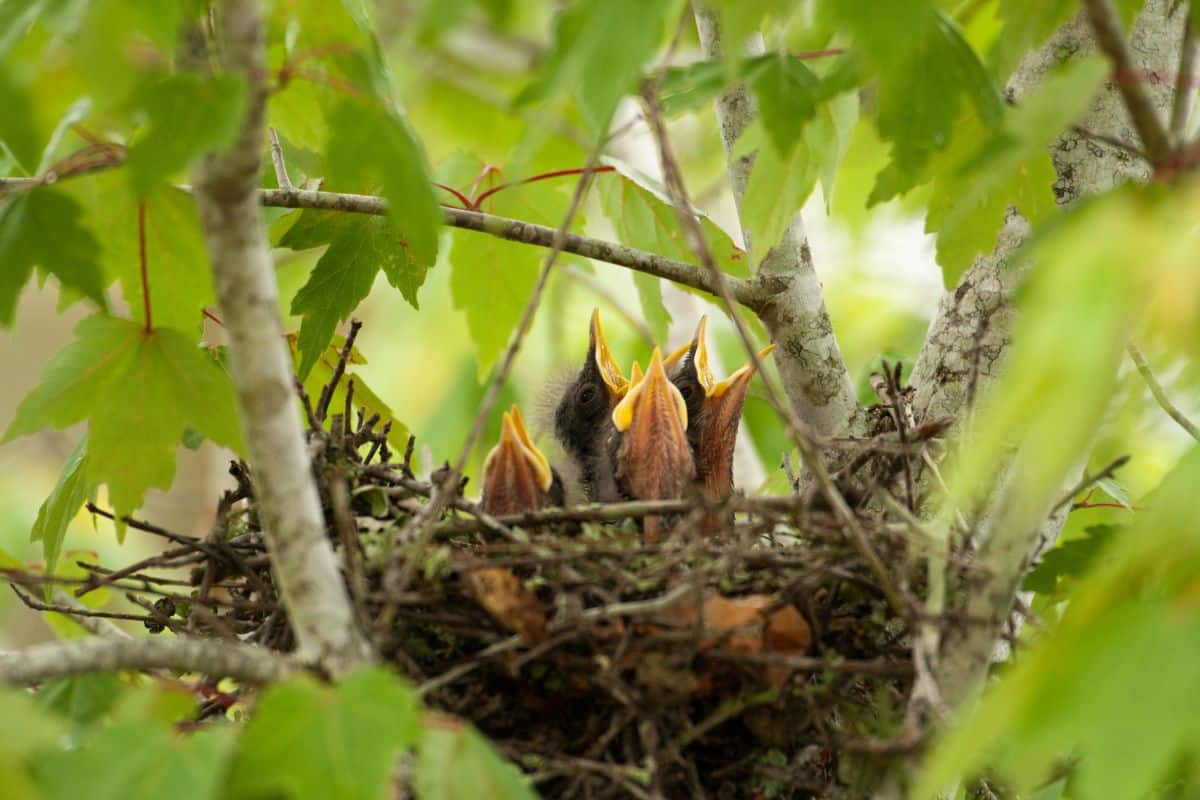
You can find a mockingbird nest by simply looking up! Mockingbirds construct their nests from twigs, leaves, and grass. They reside on branches between 3-10 feet off the ground.
Looking closely at both trees and shrubs around you and listening to their song will help you narrow the location down. Treasure the time they are around. Mockingbirds never use the same nest again, so these can be once-in-a-lifetime spots.
You can also watch the sky; you’ll be able to spot the male and female mockingbirds flying around, gathering supplies to usher in their growing family. That sign can help you deduce where the new nesting ground might be.
Will There Be More Than One Nest with Baby Mockingbirds in One Area?
Usually, there will be just one in a single location at a time because mockingbirds are very territorial creatures. You may see the same mockingbirds build a new nest in a different spot. Mockingbirds will lay between 2-6 eggs, which they will incubate for approximately 2 weeks and then hatch.
Since mockingbirds are somewhat nomadic, they tend to favor a territory for nesting, but it’s unlikely that they will reuse the nest. This is to protect their young from predators.
How Do I Prepare for Baby Mockingbird?
It can be exciting to see mockingbirds build a nest in your tree! The best way for you to prepare for a baby mockingbird is to watch from afar. Disrupting nature’s predetermined cycles can harm baby birds, so you want to keep your distance and avoid disturbing the parents.
Unless there’s an emergency, feel free to fill your birdfeeder with extra birdseed and watch your new birdy neighbors from afar. You can stay alert, but don’t try to intervene unless you have reasonable cause.
When Will a Baby Mockingbird Leave the Nest?
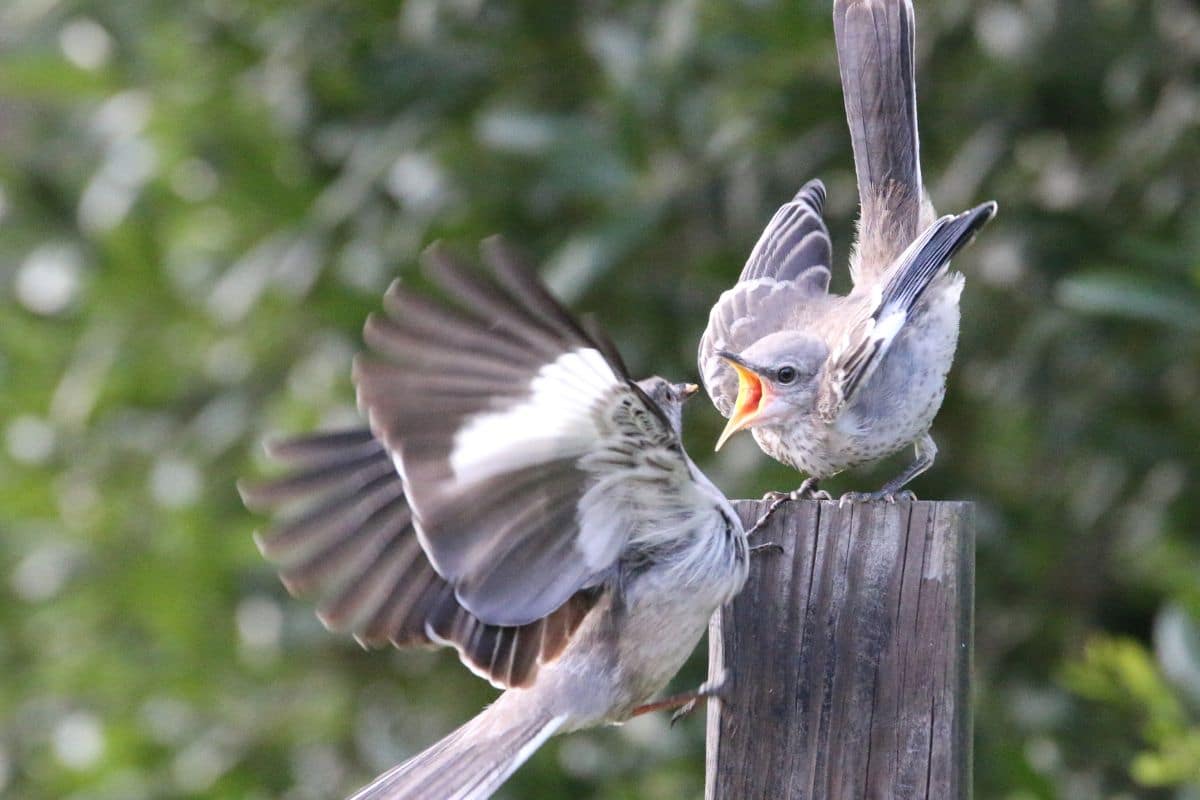
A baby mockingbird will leave the nest about twelve days after hatching. For the first few days after hatching, baby mockingbirds are altrical. This is a state in which they are unable to move by themselves.
This state fades around the ten-day mark, which is why they usually abandon the nest at that point in their lives. The father mockingbird will teach the fledglings how to fly while the mother begins to construct another nest. Mockingbirds will typically have between 2-4 sets of babies per year.
What Do I Do If I Think a Nest of Baby Mockingbirds Has Been Abandoned?
While mockingbird parents are extremely protective over their young, something might happen when they are absent from the nest. Depending on the stage of the egg cycle, you may be able to determine what happened if the parents have not appeared for a while.
If the nest is unhatched, the parents may be looking for food. They may also be purposely staying away so predators are unable to locate the nest.
The incubation period doesn’t always immediately happen right after laying the eggs, so the adult mockingbirds may not always be present.
If a predator has attacked the parents, they have gone off for food, or if something scares them off, you might be worried if you think baby mockingbirds are on their own.
One of the most important things to do is to watch carefully and be patient. Don’t be hasty; wait. Depending on the stage of the egg cycle, there are multiple reasons why the parents aren’t present. You should closely monitor the nest for a few days at least before determining that the eggs are alone and that you should step in.
Touching a baby bird gives it a foreign scent, which will cause the parents to abandon it and you don’t want to do that inadvertently. Watch and don’t assume the nest is abandoned right away. If you’re fairly confident that the parents are not returning, then you can approach it.
You can step in by contacting a local wildlife habilitation center or you can try your hand at taking care of the baby mockingbird on your own. No matter what, you should remember that research is essential in ensuring that the mockingbird is kept healthy.
By stepping in to help, you can protect these birds from potential predators, starvation, and cold temperatures. Because they are vulnerable at this young age, they may require assistance to survive. However, disturbing the nest will cause the parents to abandon the eggs, so only do so as a last resort.
Housing a Baby Mockingbird or a Nest of Mockingbirds
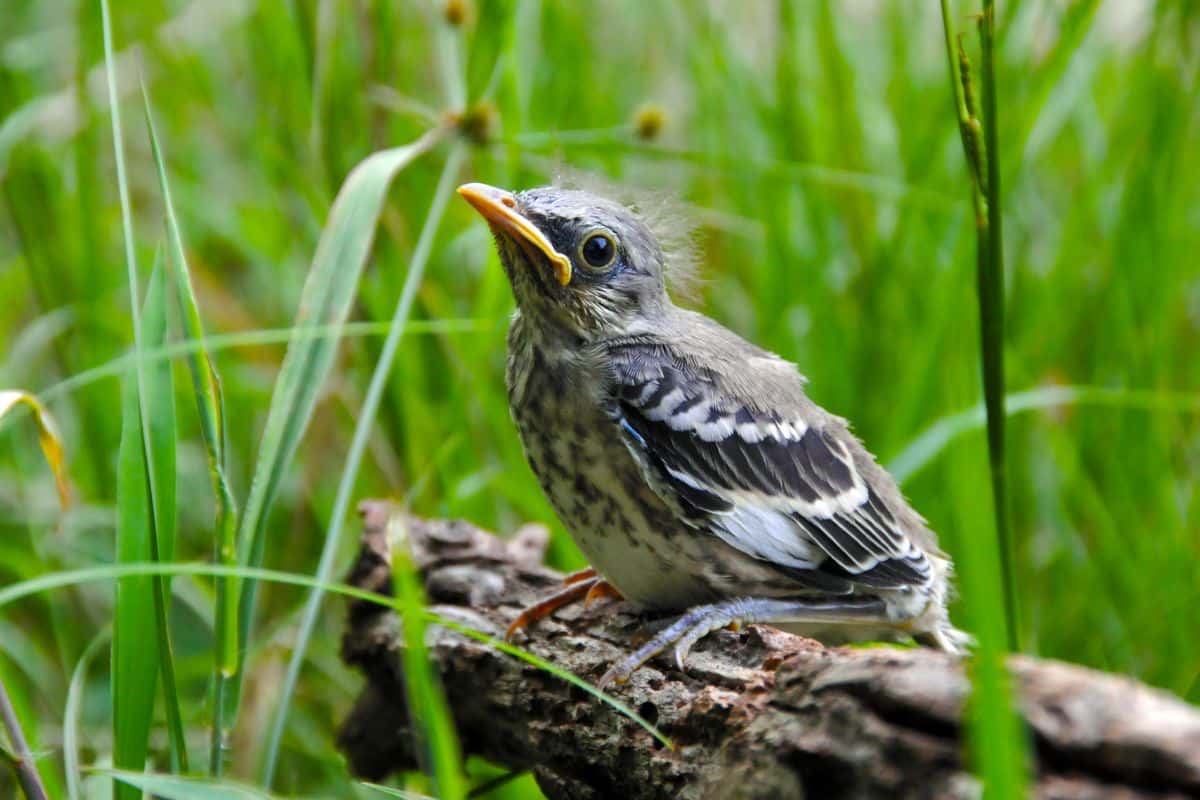
If a situation falls where you find yourself with a baby mockingbird, it’s crucial to make sure you keep the mockingbird comfortable and try to replicate their nest as best as you can.
Baby mockingbirds should be kept warm, and you can accomplish this by lining a box with fabric or felt. Poking holes in the box will ensure sufficient airflow; it also helps if the box has a removable lid to trap warm air, so a shoe box is often a decent mock shelter. If you have any household pets, such as cats or dogs, keep them away from the baby mockingbirds.
When you have to handle the babies, feed them, or move them, it’s important to wear gloves, so you don’t accidentally transfer any disease to the baby or yourself.
What Does a Baby Mockingbird Eat?
Baby mockingbirds love eating mealworms. The worms are tiny enough for them to eat and are also nutritious. Though older mockingbirds can eat bugs and seeds as well, baby birds need softer foods they can digest easily.
If you are ever in a situation where you find yourself feeding a baby mockingbird, it’s critical to ignore the diets of older, fully-developed mockingbirds. Baby mockingbirds can be fed mealworms, hard-boiled eggs, moist dog food, and raw liver, for a few examples.
If you are doubtful, you can always consult a wildlife rehabilitation center. The eating schedule of a baby mockingbird can be very complex, which is why you might prefer professionals to take charge of it. At the very least, they can give you some advice as to what to feed your new friend.
How Do I Tell a Female Baby Mockingbird From a Male Baby Mockingbird?
It will be a little tricky to tell a female baby mockingbird from a male mockingbird at first. It’s much easier in adulthood; male mockingbirds have gray coloring and white patches on their wings, while female mockingbirds are a brownish-gray hue in their plumage and have no patches on their wings.
Female mockingbirds are also smaller than their male counterpart, which is a unique characteristic of the mockingbird; female birds are usually larger than males in most bird species.
When Can I Hear a Baby Mockingbird Sing?
People are surprised when they learn that the male mockingbirds do most of the serenading! Females rarely sing, except when they stake their territories in the winter season.
If the baby mockingbirds on your property are males, you can hear them sing before spring begins, throughout the summer, and then a little into fall before they fly south for the winter. They tend to sing to court the female mockingbirds and let them know they are ready to build a nest.
Conclusion
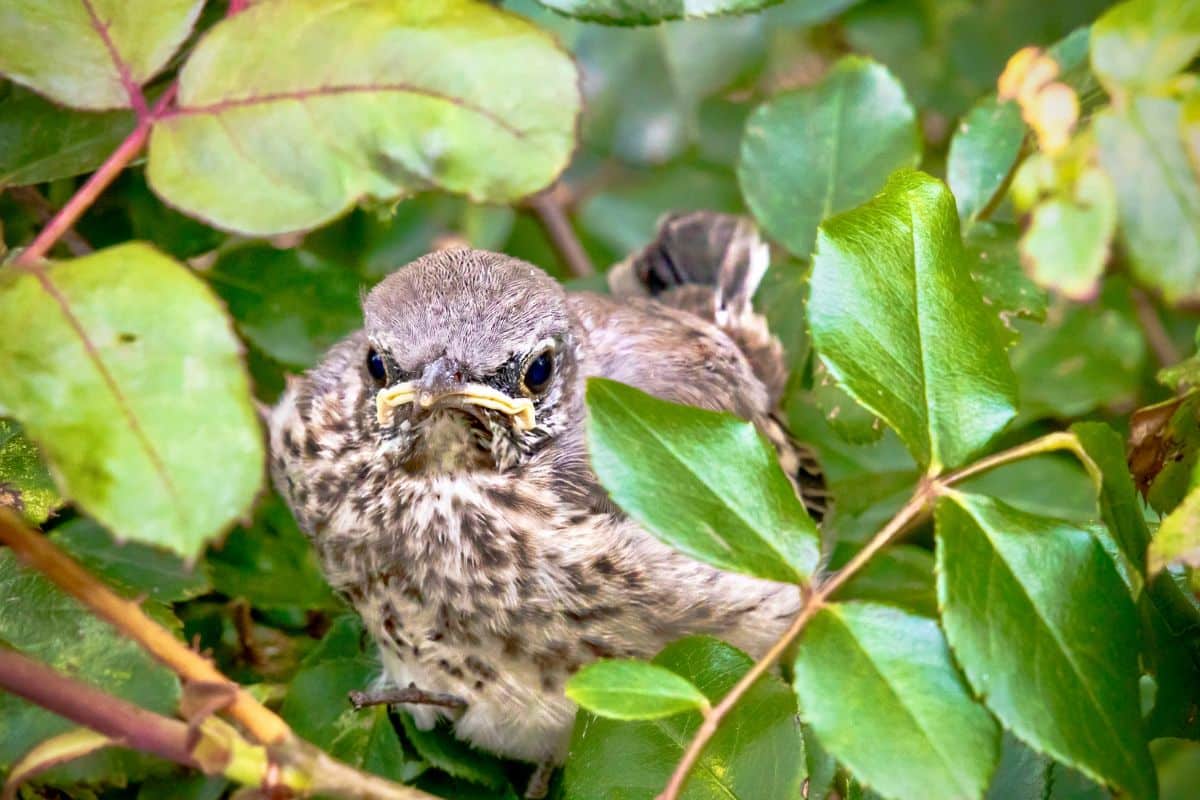
Baby mockingbirds are a wonderful part of nature! With that beauty comes quite a bit of responsibility. As humans, we have an obligation not to interfere with nature’s calling. However, sometimes things happen, and you might have to step in. By carefully evaluating a situation, you can determine what your next steps should be if you believe a nest is in danger.
Like all baby birds, baby mockingbirds are very sensitive creatures who need proper care after abandonment. It’s okay to consult a wildlife rehabilitation center, especially if you’re nervous about taking the baby birds under your wing. Research and advice from professionals can help you take care of them until they’re ready to go off on their own.
However, most of the time, you won’t need to step in! Let nature run its course and enjoy the beautiful songs that mockingbirds will gift you for being an excellent neighbor.
